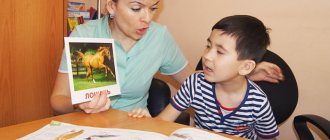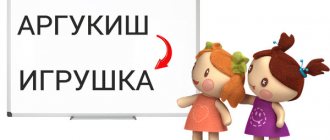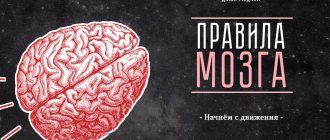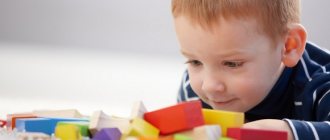Mnemonics for beginners is a system of various methods that helps to remember information using various associations and is used in teaching children from preschool age. This technique uses previously acquired knowledge to create a chain of connections. Thanks to such logical series, you can easily remember information that is difficult to perceive.
There are many mnemonic techniques. For example, Cicero’s method is based on spatial imagination, while Aivazovsky’s method works by training visual memory. Number sequences, foreign words or complex terms are easier to remember with the help of consonant or familiar words and numbers.
In a time when there was no written language, ancient priests and storytellers had to memorize enormous amounts of information. With the advent of the first texts put on paper, the art of using mnemonics did not lose its relevance, because the raw materials for writing them were very expensive. Even in Ancient Greece, notes were made using mnemonics. The art of associative memorization was mastered by the monks of the Middle Ages. At all times, people who could quickly remember and store useful and interesting knowledge in their heads were valued.
Pros and cons of mnemonics
Mnemonics are actively used in teaching children. For example, one of the most famous phrases for studying the sequence in the color spectrum is “Every Hunter Wants to Know Where the Pheasant Sits.” It is she who helps to accurately tell how a rainbow “works.”
The role of methodology in the development of children:
- helps you remember information quickly and for a long time;
- improves memory and attentiveness;
- develops speech, expands vocabulary and horizons, teaches how to pronounce sounds and words correctly;
- forms logical and imaginative thinking;
- improves imagination, intellectual and creative abilities;
- develops character, teaches sociability, helps to overcome isolation and shyness.
When used correctly, mnemonics have very few disadvantages.
- At the initial stage of use, children have a small vocabulary, so it can be difficult for them to work using this method.
- There is no need to abuse the method and use it in cases where it is too easy to understand the properties and remember the signs - this hinders the child’s development.
- Sometimes it is not possible to use the technique. For all-round development, it is necessary to teach the child to learn information mechanically; this skill will also be useful in the future.
The human brain consists of two hemispheres. The left is responsible for logic and speech, and the right helps to perceive different colors and form images using the imagination. When using mnemonic techniques, both halves are activated simultaneously. As a result, thought processes bring maximum benefit in the form of acquired knowledge.
From what age is it used?
Teaching children using mnemonics can begin from a very early age. Getting to know exercises for children starts with simple techniques.
First, they use mnemonic squares, which can be introduced to children at the age of three. In the first lessons, children study simple images that represent one word, phrase or simple phrase. You can place pictures in a square and learn poems with movements.
Later, at 4-5 years old, children become familiar with mnemonic tracks - systematized pictures of four drawings. With the help of such images, the concept of sequences is formed. Thanks to group illustrations, you can easily tell a short story, remember the steps of washing your hands, the process of dressing or washing your face.
Children aged 6-7 years begin to study mnemonic tables that allow them to perform more complex actions:
- retell various works;
- memorize poems and complex words;
- guess and make riddles;
- find rhymes for words;
- invent fairy tales or stories;
- distribute objects into groups according to certain characteristics;
- study numbers;
- become familiar with the basic rules of life safety and behavior in various places, and methods of self-service.
Children learn to express their thoughts correctly and beautifully and use new words in speech. Attention and intelligence develop, the ability to highlight the main thing and compare improves.
Using the mnemonics method in environmental education and education of preschool children
Nadezhda Gagua
Using the mnemonics method in environmental education and education of preschool children
Using the mnemonics method in environmental education and education of preschool children.
Gagua N. A., teacher at MBDOU “Kindergarten 38”
Glazov
1-2 slide
Preschool age is an important stage in the development of human ecological culture . During this period, the foundations of personality are laid, including:
positive attitude towards nature and the surrounding world;
the child begins to distinguish himself from the environment;
an emotional and value-based attitude towards the environment develops;
of the moral and ecological positions of the individual are formed .
Thanks to this, it is possible for a child to develop environmental knowledge , norms and rules of interaction with nature, develop empathy for it , and be active in solving certain environmental problems .
3 slide
Today I will try to reveal the concepts of “ Mnemonics ”
and
“
Mnemonic table ” , introduce you to the stages of work and show various options
for using mnemonic tables in the environmental education of preschool children .
We often encounter the problem that children cannot quickly remember the text, get confused in the lines, rearrange words, cannot begin to describe natural phenomena, etc. The fact is that children mostly have developed visual memory, rarely when Children have developed auditory memory, so we need to find techniques that would develop children's memory.
“Teach your child some words unknown to him -
he will suffer for a long time and in vain,
but connect twenty of these words with pictures,
and he will learn them on the fly.”
K. D. Ushinsky
To successfully solve the problems of environmental education, we use the method of mnemonics in our work .
4 slide
MNEMOTECHNIQUES – a system of special techniques that ensure effective memorization, preservation and reproduction of information . Mnemonics are designed to facilitate memorization and increase memory capacity by forming additional associations and organizing the educational process in the form of a game.
Relevance:
1. Mnemonics make it easier for children to master coherent speech.
2. The child, relying on images , establishes cause-and-effect relationships and draws conclusions, thereby developing logical thinking.
3. Application of mnemonics , the use of generalizations allow the child to systematize his direct experience.
5 slide
The purpose of using mnemonics in environmental education is to ensure the successful acquisition by preschoolers of knowledge about the characteristics of natural objects, their structure and relationships. Mastering the techniques of working with mnemonic tables significantly reduces training time and simultaneously solves the following problems:
6 slide
Tasks:
development of basic mental processes - memory, attention, perception , thinking (especially figurative )
;
coding of information ( transformation of objects , images into abstract signs , symbols);
recoding information ( converting abstract symbols into images ).
7 slide
A mnemonic table is a diagram that contains certain information. Looking at this diagram, we can describe any animal, what parts of the body it consists of, what kind of ears the animal has, what kind of tail it has, how it moves, what sounds it makes.
8 slide
studying mnemonics with children 4-5 years old, when they have already accumulated a basic vocabulary. Training is built from simple to complex. We begin our work with the simplest mnemonic squares , then move on to mnemonic tracks , and later to mnemonic tables . A mnemonic table is a graphic or partially graphic representation of natural phenomena , some actions, fairy tale characters, etc. (previously they were called “scheme - algorithm”). We depict it in such a way that what is drawn is understandable to children. For children of younger and middle age we use colored mnemonic tables , since individual images (yellow chicken, green Christmas tree)
.
At the initial stage, the adult offers a ready-made plan (scheme), and as they learn, children become involved in the creation process and create their own diagrams.
Slide 9
Later, the image of the characters - we sketch them in graphic form (the wolf is a gray triangle, the sun in winter is a yellow semicircle, autumn is the letter “o”
yellow color).
For children of senior preschool age, if possible, we draw diagrams in one color, so as not to distract their attention to the brightness of symbolic images .
The number of cells in the table depends on the complexity and size of the text, as well as on the age of the children. work with mnemonic tables in the following stages:
Stage 1: We look at the finished table and analyze what is shown .
Stage 2: We recode the information ( convert abstract symbols from the mnemonic table into images ).
Stage 3: After recoding, we retell the material on a given topic. If work with mnemonic tables with children has been carried out recently, then the teacher gives the children ready-made mnemonic tables . Children, with the help of a teacher, examine and pronounce what is depicted . And in older preschool age, children can not only independently tell the story using a mnemonic table , but also compose it.
10 -11 slide
Mnemonic tables also especially effective when learning poems (especially about nature)
.
Now I invite you to participate in compiling a mnemonic table when learning a poem. Listen to it:
"THE FIRST-ROUND"
N. Nishcheva
There is a Christmas tree in front of us:
Cones, needles.
Balls, lanterns,
Bunnies and candles,
Stars, people.
– In front of you are sheets of paper and pencils. I invite you to draw with me. Let's draw schematically.
– "There's a Christmas tree in front of us"
.
What can we draw for this line? (Christmas tree)
. Right.
Next line – “Needle cones”
. Let's draw... Etc.
– Our poem is “drawn”
,
the mnemonic table is ready . Now, looking at your mnemonic tables , read the poem without relying on the text.
- Did you like it?
12 slide
This way you can draw any poem from simple to complex. This memorization technique can be useful not only for children, but also for you. Just try it and see the result for yourself!
Slide 13
I would like to offer another type of work with mnemonic tables . This is the use of ready-made schemes of pure sayings and nursery rhymes.
I offer several cards as a sample . Looking at the pictures, I ask you to read the clear sentence. Now close the text and bend it. And then I propose, based only on the diagram, to tell the truth.
– Do you think using a flashcard helps you remember quickly?
Slide 14
Mnemonic tables can also when composing descriptive stories. Mnemonic tables have been developed to describe the seasons, stories about animals and birds, vegetables and fruits, mnemonic tables to describe natural objects (sun, water)
.
Tables such as “The Journey of a Droplet”
(the water cycle in nature,
“Transformations of a frog”
, “Rules of behavior in the forest
(on a pond)
.”
We use mnemonic tables - riddles on environmental topics .
“Description of the seasons”
-The sun (shines, but does not warm; it is often behind the clouds; it is hot)
— Sky — Earth — Trees — People (their activities, clothes)
— Animals (behavior, nutrition, appearance)
— Birds — What you can do
“Description of vegetables and fruits”
- What is this? — Color — Shape — Size — Taste — Juiciness — Place of growth — What can be made from it.
“Description and comparison of an animal”
— Appearance (body parts)
— Place of residence (cowshed, kennel, pigsty, etc. (for domestic animals)
or den, lair, burrow, etc.
(for wild animals)
- What does it eat?
-What is the cub's name?
— What benefits does it bring to humans (to describe only domestic animals)
— In what fairy tales or cartoons does this animal appear?
“Description and comparison of birds”
- Appearance
— Wintering or migratory
— Where it lives — What it eats — How it hatches chicks — What benefits does it bring to humans?
15 slide
Using this diagram as an example, I invite you to play, you guess any vegetable or fruit and, based on the diagram, tell us about it, and we will try to guess it! Try...
16 slide
Using these examples, in a playful way, you can teach your children a poem or retell a literary text, learn how to write a descriptive story, automate the sounds, etc.
17-18-19 slide
In our work, we use algorithms for the processes of experimental research, caring for indoor plants, and planting seeds.
I would like to note that children really enjoy drawing and working with mnemonic tables . A visual diagram acts as a plan for a speech utterance. The child knows where he can start, how to continue and refine his story, and how to complete it.
20 slide
Thus , the use of the method of mnemonics in environmental education and education of preschool children of a holistic picture of the world in children. Work in this direction helps children easily navigate the sign system and coding methods, improve expressive speech, develop logical memory, imaginative thinking and attention .
I think that all the games with mnemonic tables that I showed you today will be useful to you and your children will also like them. They can be used both at work and in the home playroom. It's very interesting and exciting!
Features of application
You can achieve results during mnemonics classes if you follow the basic rules for using the technique.
- Subsequence. You cannot start classes with difficult tasks. First they work with mnemonic squares, single images, then with mnemonic tracks and mnemonic tables.
- Rationing. Children are not shown more than two tables per day, and the number of images in each block should be no more than 9 pieces. Too much information is difficult for a child to absorb, so classes will be ineffective.
- Colorfulness. The pictures should interest the child in their appearance. They use bright colors, rich and expressive images. Tables in black and white will not be able to attract the attention of children and have the desired impact; they can only be used for children of older preschool age.
- Emotionality. Children should feel the positive energy of such activities.
- Diversity. Pictures or series of images for one lesson should be on different topics. Guys will quickly lose interest in the same type of training. It is also advisable to select tables that require different actions. For example, the first pictures help to remember the sequence of food intake, and the next group helps to tell about how insects move.
- No coercive measures: just a game. Classes can only be conducted when children are involved in the process with pleasure and interest. Everything should happen in a playful way. If the children's attention wanes, it is better to stop the lesson and continue at another time.
It is enough to adhere to these simple principles to achieve maximum learning results.
Mnemonic tables for children with OHP
The concept of coherent speech and its significance for the development of a child with general speech underdevelopment (GSD) has a direct relationship with the logic of thinking and the ability to comprehend images seen or sounds heard, expressing this in sequential speech in which logical chains are present. The general level of development of coherent speech inherent in preschoolers with ODD depends on the ability to think through information and construct statements on a variety of topics.
Dialogical speech is displayed in the communication of several people, often accompanied by simple monosyllabic statements, asking specific questions and composing options for answers to the interlocutor’s questions, followed by reproduction of the selected answer. In this process, a special role is played by formulating and asking questions, constructing answers and reasoned defense of one’s opinion. Coherent monologue speech in preschoolers is characterized by expansion and concentration of thoughts on the main thing, without delving into details. In the process of reproducing one’s thoughts and choosing linguistic means, internal motives play a decisive role, since it is they that stimulate monologue speech.
The features of the stages of development of coherent monologue and dialogic speech vary, but both types are closely interrelated. This nuance must be taken into account when conducting classes aimed at stimulating the development of coherent speech in children with ODD.
The introduction of mnemonics into speech development classes for preschool children should be carried out with the help of mnemonic squares, in which the simplest words are encrypted (boy, girl, sun). Only after children understand the concept of “encryption” can they move on to more difficult variants of schemes - mnemonic tracks with mnemonic tables, which can be based on a whole story.
Mnemonic track “Two funny geese”.
Using this technique during classes with children with special needs allows:
- increase attention and interest in games with logic cards;
- facilitate the perception and processing of information data that
- are stored in memory and can be played back if necessary.










